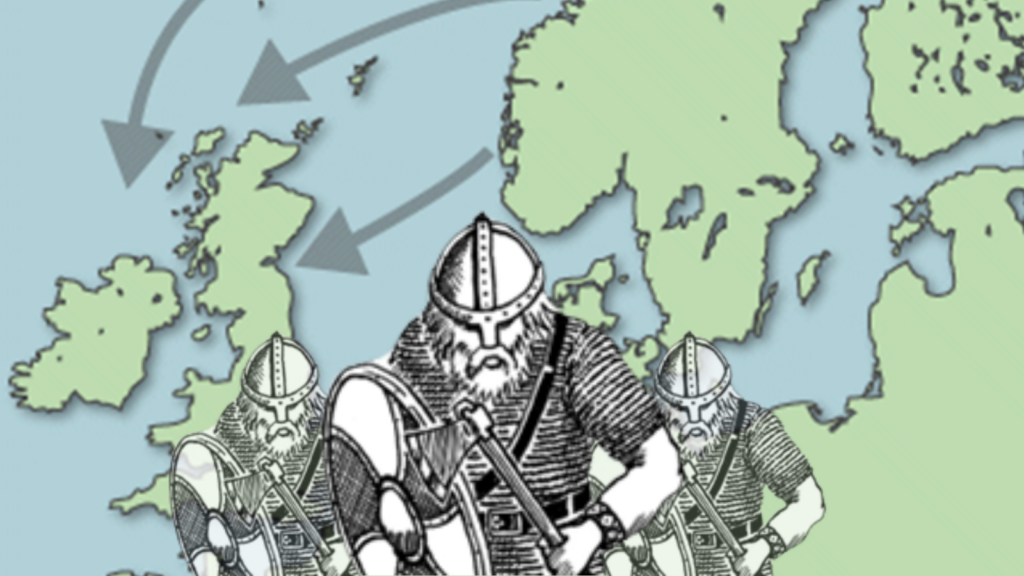Who were the Vikings?
Many have been captured by a fascination with the Vikings. Often stereotyped as big, hairy and scary, in horned helmets ready for battle… You can understand why.
But beyond the bearded stereotypes, who were the Vikings?
Starting from the basics, the word ‘viking’ is an activity, rather than the name for a group of people or specific culture. ‘To viking’ is similar to piracy and means to raid and plunder. As it turns out, the people from the lands of modern-day Norway, Sweden, and Denmark were frighteningly good at ‘going viking’ over 1000 years ago.
Categorising these people as the ‘Vikings’ has been a useful tool for us to refer to and make sense of that part of history, but how these people would have defined themselves would have been very different.
Many academics prefer the term Norse people rather than Viking. This comes from those who were Old Norse speakers from modern-day Denmark, Sweden and Norway.
The Vikings were mainly farmers, traders, and craftsfolk. Sea voyages to lands near and far were an important part of Scandinavian life in the Iron Age. They took to the seas to trade goods, food, and resources, and even for the occasional raid.
To do this, they had to be skilled travelers with innovative ship-building technology.
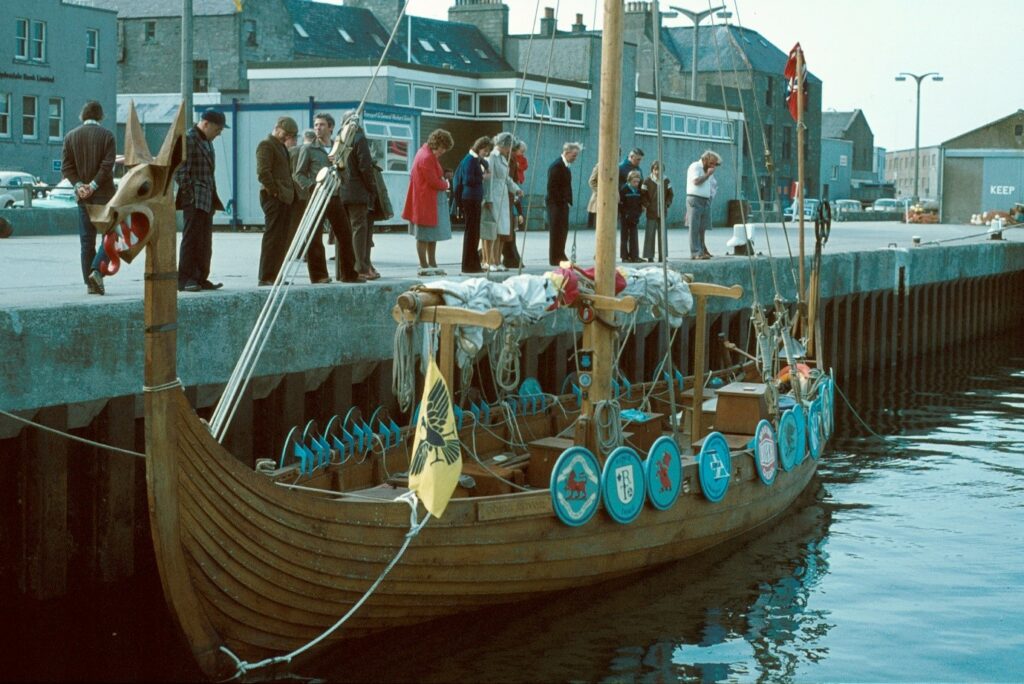
© Old Haa Trust, licensed via Scran.
The start of the Viking age in Britain
Viking ventures to British Isles would have been for a mix of raiding and trading. Their ships gave them an upper hand as they arrived at the shores of Scotland. Their shape and build meant that they were nimble and swift, enabling them to sail long distances but shallow enough to beach upon sandy shores.
The first record of Viking raids dates back to 793 A.D. at Lindisfarne Priory (coast of North East England), but most historians agree that Viking activity in Britain existed before this.
Modern-day Scotland saw its own first recorded raid in 795 A.D. at the monastery on the Isle of Iona. Many monks were violently killed and treasures stolen. For Iona, this was the beginning of a series of raids that would follow over the following decades.
Raiding and violence at this time weren’t unusual; the Picts, Angles and Irish were known to raid too. Including monasteries. What made the Viking raids stand out was that the Norse were pagan and not originally from these Isles.
The Vikings eventually looked to settle, taking land and becoming farmers, merchants and fishermen. In Scotland, this was mainly in the north and west. They also settled in the north, east and centre of England, parts of Wales and the Isle of Man.
Across the water, Ireland was experiencing its own transformation at the hands of the Vikings too.
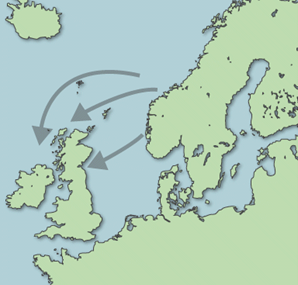
© The Multimedia Team Licensed via Scran.
Scandinavia to Scotland
At the time of the Viking age, ‘Scotland’ as we currently know it did not yet exist. Scotland was divided into a series of Kingdoms, with the southern region being a part of the Anglo-Saxon kingdom, Northumbria.
By 850 A.D., many Norse people had settled in Scotland, and soon after, the earldom of Northumbria was seized. One of the most powerful kings in Scotland at the time, Causantín mac Cináeda, was reportedly killed fighting the Vikings in 877.
The Vikings established a base of power in the north and west of Scotland from 890’s A.D. This power continued to expand, with an important Earldom forming in Orkney. By the 11th century, Thorfinn, arguably Orkney’s greatest Earl, ruled territories from the Moray Firth to the Hebrides, parts of West Ireland and Shetland.
Many parts of Scotland felt the cultural impact of the Norse. You can find remnants of this in modern place and personal names, the long stories of the Norse called sagas, as well as what remains in the landscape of Viking settlements in Scotland.
This includes the famous Viking settlement at Jarlshof, which was occupied for over 400 years.
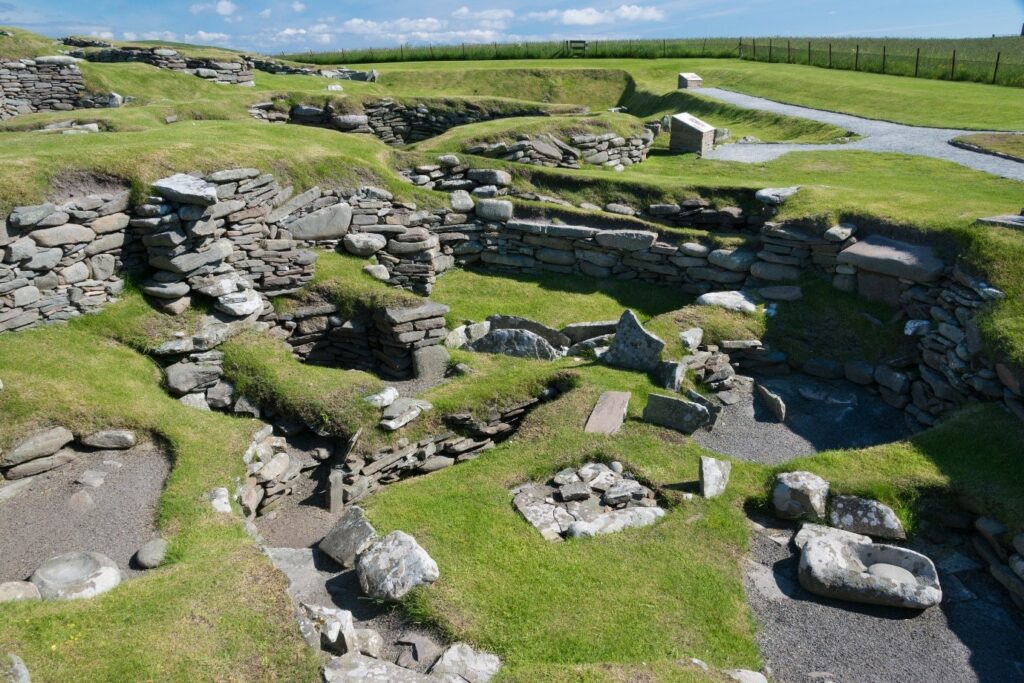
Jarlshof Prehistoric and Norse Settlement, Shetland Islands.
To this day, we continue to uncover the history of the Viking age in Britain, from the discovery of Viking treasure buried in a field in Galloway which was hidden ten centuries prior, to the reveal of a hidden Viking cemetery on the north east coast of Papa Westray, Orkney.
What was Viking life like in Scotland?
If you found yourself in the north and west coast of Scotland in the 10th or 11th century, you’d find houses made of stone, wood or blocks of turf for the walls. Step inside and look up, you’d likely see a roof made of turf or thatched using straw.
Viking life wasn’t quiet. As farmers, craftsmen or traders, many Vikings made their own tools for farming, sewing fishing nets, looking after animals and maintaining their weapons.
Women were similarly busy, the evidence shows that women were important in running the household and farm, dealing with accounts, and making all the clothes for the house. Some women may have been warriors too.
Vikings were big traders, across countries and locally. They’d sell things like fish, animal skins, wheat, wool, wood and metalwork, in exchange for glass, silk, pottery, jewellery and silver. Many of the most important Norse settlements were trading hotspots.
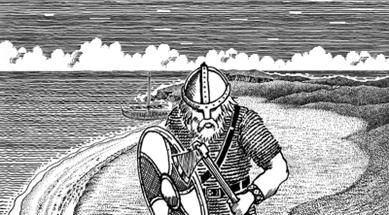
© National Museums Scotland. Licensed via Scran.
The powerful Dumbarton
During this period, Dumbarton Rock was the location of a stronghold and capital of the Kingdom of Alt Clut. It was a crucial spot for power and influence, with the River Clyde forming a vital route up and down the west coast of Scotland and across the Irish Sea. The strength and maritime power of the Kingdom of Alt Clut may have protected parts of this area from the worst of the early Viking raids.
As such, the strategic positioning of the rock, alongside Alt Clut’s status as a maritime power would’ve made their defeat appealing (and difficult). With this base gone, the Vikings could then sail upriver, to the lowlands of central Scotland.
By the 9th century, the Vikings had firmly established themselves in Ireland. This included at the mouth of the River Liffey, giving them ample opportunities to attack Scotland from across the Irish Sea.
The Siege of Dumbarton
Amlaíb Conung and his brother Ímar, sometimes identified as Olaf the White and Ivar the Boneless, rose to this challenge in 870 A.D. Striking out from their power base in Dublin, they besieged the rock for four months while the Britons inside held up with dwindling food and water supplies. The attackers’ patience paid off, and eventually the fortresses well finally dried up and the defenders were forced to surrender.
Plundering the fortress and taking the treasures of the Kingdom, they also sent a significant number of surviving Britons to Ireland as slaves. It appears that the remains of the fortress were burnt so badly that it was abandoned for some time. The main powerbase of the Kingdom of Alt Clut shifted further up the Clyde to Govan, now part of Glasgow.
Dumbarton Rock doesn’t appear in any records again until the 13th century, although a number of carved graveslabs found on site would suggest that it was being used for burials in the century following the siege.
You can see these on display at our new exhibition at Dumbarton Castle. If you want to find out more and dive into what happened to Scotland’s Vikings, head to our resident Viking-expert Craig Stanford’s article.
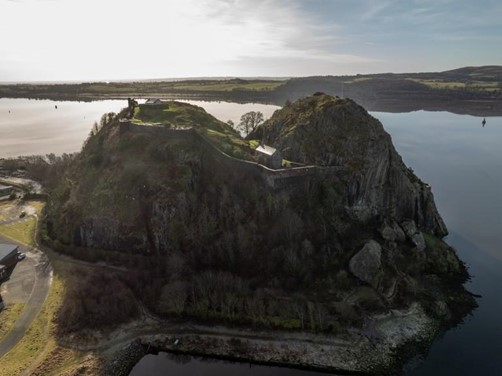
Dumbarton Castle.

